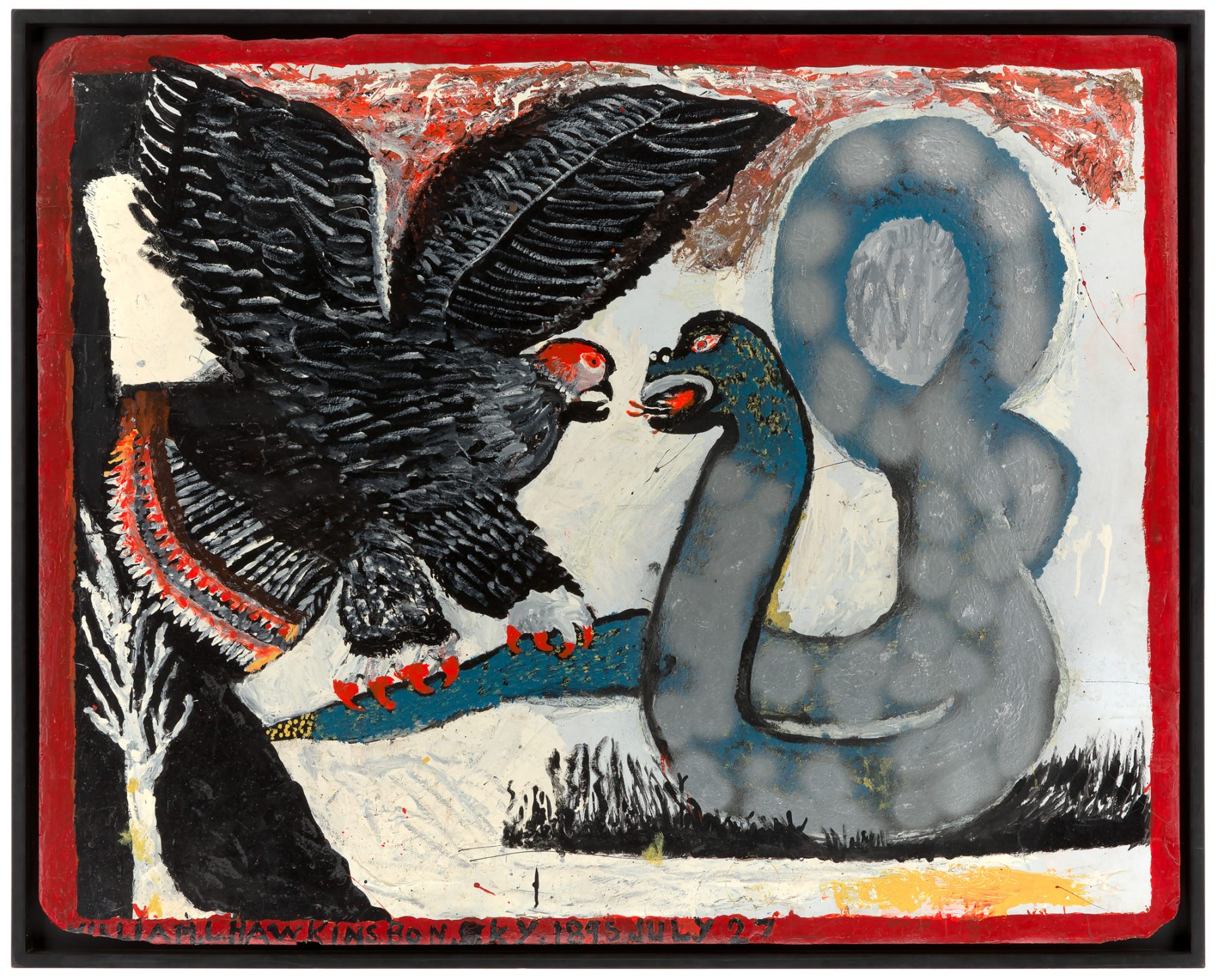William L. Hawkins
William Hawkins used a variety of literary, popular and visual sources as inspiration for his works. This painting draws its imagery from the Mexican flag, though Hawkins distorts the scale and relationship between the animals to add a personal spin to the vignette. The piece also references “The Snake, the Eagle and the Farmer,” from Aesop’s Fables.
Hawkins would often title his surfaces after applying his signature semi-gloss enamel paint, allowing the artwork to, at times, “make itself.” This technique is most evident here in the areas of pool white paint. The staccato marks of his worn paintbrushes from the texture within the bird’s feathers and in the grasses beneath the snake. The spots of silver along the snake’s body are spray paint, showing yet another paint application technique. This is an early work by Hawkins, dated in part through its use of plywood rather than Masonite as a ground surface, and because the border surrounding the work is an undecorated solid color. This version is one of four variations of Eagle and Serpent painted by the artist.
William Hawkins
Eagle and Serpent, circa 1982
Enamel on board
47 1/2 x 59 1/2 inches
Signed William.L.Hawkins lower edge
Provenance
Ricco Maresca Gallery, New York
The Marvill Collection, New York
Sold, Christie’s New York, 22 January 2016, lot 38
The Collection of Lenore and Steven Blank
Sold, Christie’s New York, 17 January 2020, lot 76
Private Collection, Michigan, acquired from the above

